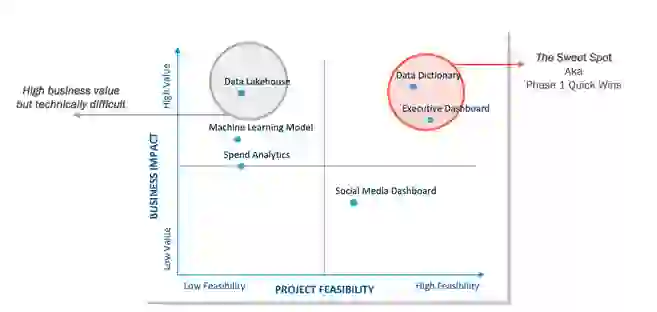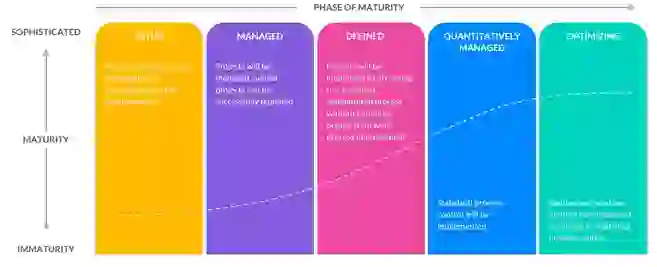
Organizations cannot unlock the potential of their data–to help them make better decisions–unless they have a clear data strategy. Start with these fundamentals.
A data strategy is a plan of action that outlines how an organization collects, stores, manages, and uses data. It includes goals for the data’s short-term and long-term usage as well as rules to ensure compliance with relevant laws and regulations.
Data strategies encompass a lot of things, from how the data is acquired, analyzed, protected, and delivered. A successful data strategy includes analysis plans so the organization can gain insights about customer behavior or other business trends – which is the whole point of the exercise.
Practically speaking, a data strategy determines how a company combines people, processes, and technology into one cohesive plan that is genuinely achievable.
If you don’t know where you’re headed, you cannot judge progress. A data strategy allows organizations to be innovative, empowers business users to work effectively, and keeps the business competitive.
Without a proper data strategy in place, organizations encounter these common business challenges:
Many organizations claim to be data-driven or data-centric, and they use the two terms interchangeably. But the two are not the same. Each has particular applications.
Data-centric organizations focus on the data itself, collecting and analyzing it to gain insights. They use this information to inform decisions about how they operate their business. As a result, data is perceived as a valuable asset to use for competitive advantage.
Data-driven organizations take an even more proactive approach. They use data to make informed decisions, as above. They also actively drive change in their operations and strategies based on what the data tells them. This type of organization puts greater emphasis on leveraging technology. For example, predictive analytics and machine learning (ML) algorithms allow them to identify patterns within large datasets so they can act upon those findings quickly.

There are several facets to an effective data strategy.
A successful data strategy reinforces and addresses the business needs to generate accurate and palpable value.
A data strategy that is misaligned with a business strategy might prioritize the wrong projects, generate useless insights (good answers to the wrong questions), and waste time and money by allocating scarce resources to unprofitable activities. Following such a path likely causes an organization to lose interest and confidence in any data initiative.
A data strategy will not succeed without executive support and business champions, which means those executives need to understand how the plan supports the business goals. Be ready to demonstrate how data can support their initiatives.
To that end, establish clear goals and measurable objectives that serve your larger business strategy.
Set both short-term and long-term quantifiable objectives. A data initiative leader is tasked with the challenge of achieving success in three key areas: revenue growth, operational efficiency, and security/privacy risk management. Prioritize these based on what matters most at this moment for your organization.
Each department or team should have its own local data-centric goal, with an action plan outlining how data utilization can help them reach their desired outcome. This usually requires negotiation among the stakeholders.
Every goal set should be accompanied by an actionable, specific plan to accomplish it. Plans should include information like who owns the goal, which technology and process to use, the cost of reaching the objective, the time needed, and the intended outcome. Plans should also remain flexible to account for unforeseen circumstances.
The roadmap that comes out of all of this makes it possible to put your plans into action. With a road map, you know where you are and where you want to be.

Prioritize activities that are relatively easy to implement and provide quick wins for the business while assessing the feasibility and expected value of each recommendation designed to bridge the current state to the future.
Include the following constraints in your data strategy roadmap:
Once you secure support from executives and identify the end goals, it is time to evaluate the current state of your ecosystem. Consider which aspects are functioning well and which need improvement to create a data-driven experience. Identify the obstacles preventing you from executing your roadmap.
You can rely on existing data initiatives as a starting point. These may inspire those attainable quick wins, identify blocks you hadn’t considered, and take realistic, incremental steps to become more data-driven.
Don’t be starry-eyed about what you can accomplish with the resources available. Do your best to recognize the existing shortcomings, existing pain points, and weaknesses, whether they involve technology, processes, or people.

Data architecture includes data identification, ingestion, storage, transformation, and analysis. A well-documented and implemented data architecture is essential for an effective, reliable data strategy because it simplifies scaling your data operations when the need arises.
Review existing data infrastructures (which I sometimes call data platforms) and analyze how business users already take advantage of them. This helps identify potential gaps that need resolution.
The next step involves making technology-centric decisions based on specific requirements such as data quality, data compliance, and of course, the main characteristics of data. Any data strategy requires the right tools and technologies to work as planned.
Data architecture consists of the tools and processes that allow you to design the data value chain (the data journey). It provides a blueprint for how and where data is collected, stored, and the flows between different data sources and applications. These elements may include various kinds of on-premises and cloud-based hardware and software. The goal is to make data as accessible, shareable, and actionable as possible for the stakeholders who need it, with the right security controls in place.
The first step in constructing your data architecture is to identify the datasets present within different business units of the company. A data catalog can be beneficial for this purpose, if you have one. Storing your data in a single repository, such as a data warehouse or data lake, is necessary to analyze and work on it effectively.
Obviously, this is a project on its own, and the specifics depend on your own shop. You may need to ingest raw data from disparate sources and replicate it to a destination for storage and analysis. You may need to integrate or transform the stored information into an alternate format to make analysis easier. This is how data pipelines come into the overall picture.
The right people in the right roles are essential to ensure that technology and processes are adopted and business objectives are met. The data strategy team typically includes representatives from the executive board, business analytics, and IT.
Create a data strategy team to ensure that everyone’s interests are represented. Think about everyone who uses your organization’s data, even those whose job responsibilities don’t suggest that data is central to their work. When an organization has multiple data sets, you should specify which data set belongs to which “owner,” meaning who is responsible for storing, processing, and interpreting data sets.
An operating model dictates the data strategy team structure. An organization can subscribe to three types of operating models: decentralized, centralized, and hybrid.
No model is inherently better than the others. Deciding which model to use comes down to your organization’s size and resources as well as its data needs.
Evaluate and understand the data team’s skillsets. What level of data literacy does everyone have? Do you need to hire additional people with specific skill sets? What kind of training does your staff need?
While every organization is different, these roles are common personas that come together to create and implement a data strategy:

Data governance sets out processes and responsibilities to guarantee the strict alignment of data strategy with the business strategy. As your business evolves, so must its governance rules.
You’ve probably seen stories about businesses with great data strategies that failed. Their data strategies were sound, but they failed to create an internal organization that could both deliver value from their data assets to internal customers and generate adequate levels of profit from it.
While you can find lots of advice on how to devise better strategies, there needs to be more guidance on how to execute those strategies.
This is why data governance is a key element of any successful data strategy. It establishes control over data assets and is directly accountable for the data strategy execution.
Data governance encourages team members to view data as a valuable asset rather than just an output of business operations. The practice also ensures that everyone follows established policies when dealing with data.
Whatever your data strategy looks like, it is bound to involve a lot of changes for teams and potentially new responsibilities or expectations. If you do not take the culture shift into account, you may not realize the potential benefits from your data strategy plan.
Motivate the people who work on the project, and put even more attention on selling the benefits of “the new way” to the people whose existing processes you’ll be up-ending. Demonstrate how implementing this strategy can help meet business objectives beyond “hours saved.” Lean on your champions and stakeholders to support and vouch for your ROI messaging.
Turn again to your data team. Equip them with the knowledge and tools they need to succeed. This should include orientation and training on data literacy, technical enablement, and business goals awareness.
Finally, put a communication plan into place detailing such things as who receives information about the process or technical changes or how metrics are captured. Executive backing makes a big difference here.
You have your team. You have the elements of a data strategy. What’s the next step? You have the building blocks to begin thinking about designing a data architecture that meets your needs.
Consult our e-book, 8 Data Modeling Patterns in Redis, to get a peek of where we’re headed.